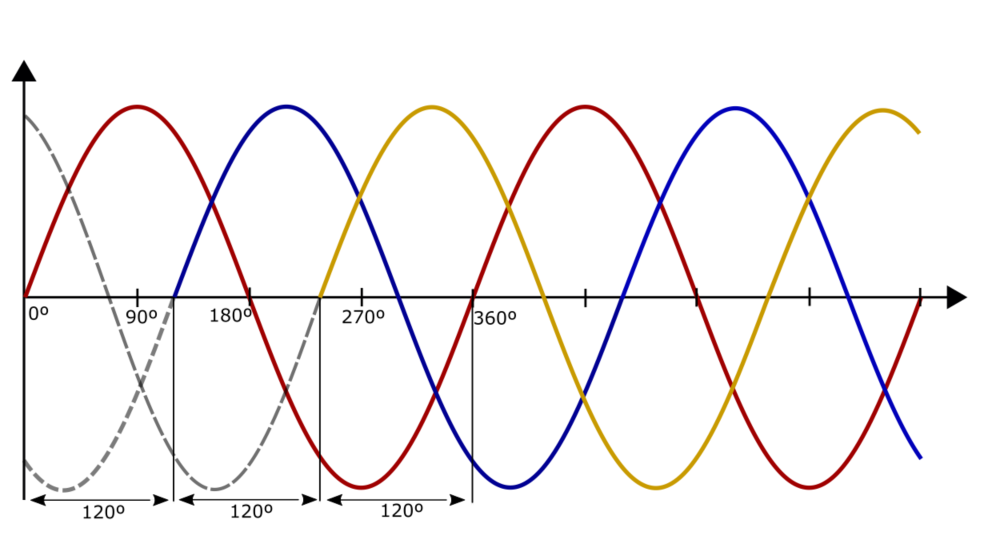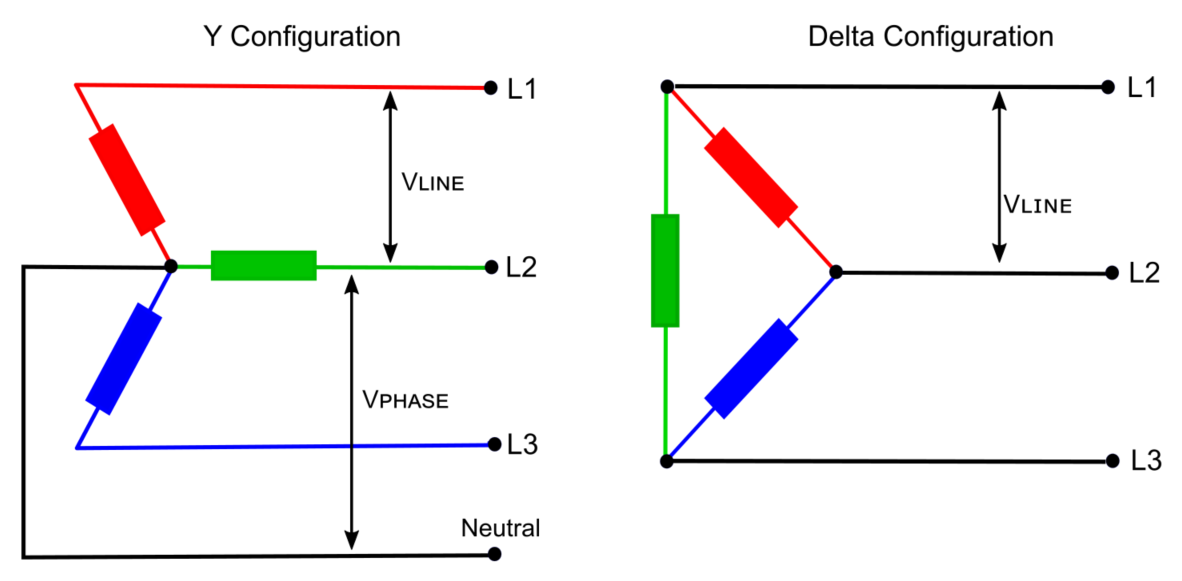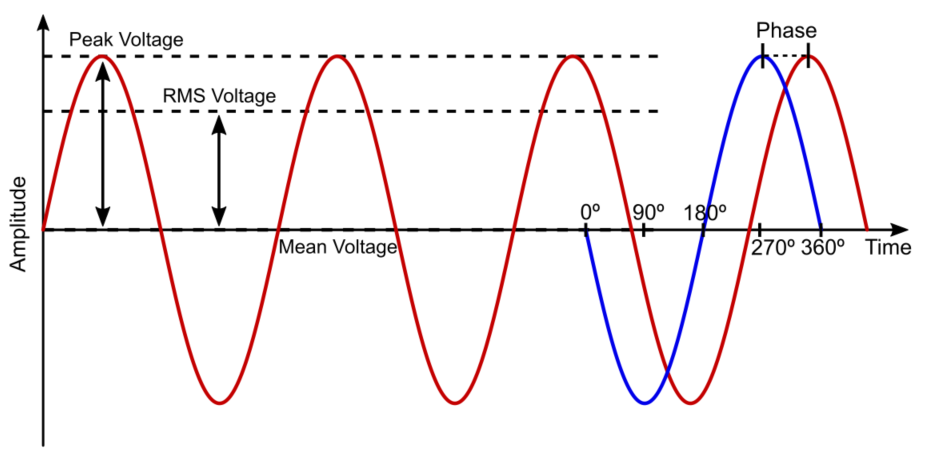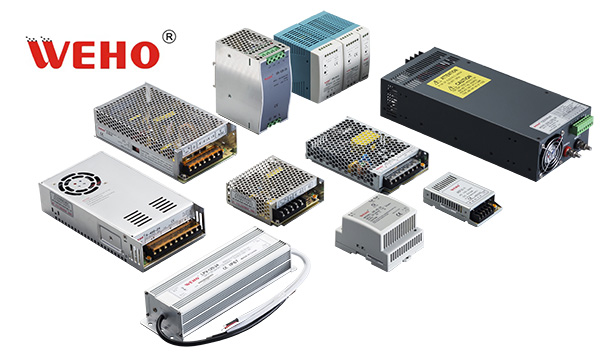Introduction to Power Supply
Selecting the right power source is a crucial factor that can affect electronic system performance. AC (alternating current) to DC (direct current) power supplies and DC/DC converters are the two primary options for powering these systems.
Direct current is often needed for engine-driven equipment, whereas alternating current is commonplace in households. In this case, you’d be needing an AC/DC power supply to make the suitable conversion — you might have used one before without even knowing it!
AC Power
Alternating current (AC) is the form of electricity used by most homes and businesses connected to the grid. Alternating current changes direction periodically with a certain frequency and voltage. These different frequencies and voltages produce waveforms that change from positive to negative over time.
Electricity is generated with the help of generators and transmitted from the source to residential and commercial premises. Generators create alternating current by spinning magnets inside coils, inducing a current in the wires. This alternating current (AC) power is then transmitted through a power line system to a transformer, which reduces the voltage so that it can be safely used in homes and businesses.
The first step in any power supply design is to determine the input current. In most cases, the input voltage source to the grid is alternating current. The typical waveform of alternating current is a sine wave (see Figure 1)
Several indicators must be considered when using AC power:
Peak Voltage/Current: This refers to the maximum amplitude a wave can attain.
Frequency: It denotes the number of cycles a wave completes per second, with the time needed to complete a cycle referred to as a cycle.
Average Voltage/Current: The average value of the voltages at all points in a cycle. In a pure AC wave devoid of any superimposed DC voltage, this average would be zero, as the positive and negative halves mutually nullify each other.
Voltage/Current Root Mean Square: This is defined as the square root of the one-period average of the instantaneous voltage squared. In the context of a pure AC sine wave, it can also be understood as the equivalent DC power required to generate an equivalent heating effect. Despite its intricate definition, it finds extensive use in electrical engineering, offering a means to determine the effective value of an alternating voltage or current, often expressed as V AC.
Phase: It represents the angular difference between the two waves. The complete cycle of a sine wave is divided into 360°, starting at 0°, peaking at 90° (positive peak) and 270° (negative peak), and intersecting the starting point twice at 180° and 360°.
DC Power
DC is a reliable form of electricity characterized by its direct current flow and stable voltage. In contrast to AC, DC has a unidirectional path for electrons. Generated from sources such as fuel cells, solar panels, batteries, and alternators, it has become the ideal choice for many electronic devices that require a constant power source.
Additionally, DC provides cleaner energy delivery than AC power which makes it highly sought after when powering up sensitive electrical equipment.
Unfortunately, this type of electricity is limited only over short distances so using it in power grids may be difficult or even impossible. Nevertheless, DC still remains one of the premier choices when delivering electrical energy efficiently and reliably.
Converting mains electricity from AC to DC power has been a key component in powering our modern electronics. This process dates back to the late 19th century and has developed in sophistication since then.
An AC-DC power supply is necessary for devices like computers, smartphones, tablets, and more – this type of power supply can be configured differently depending on the particular electronics being used, but the basic elements are always present.
AC Power vs DC Power Comarison
| Type | AC Power | DC Power |
| Definition | Mains electricity is the most common form of electrical power supplied to homes and businesses from the electrical grid. | The alternate form of electrical power is commonly employed in different applications. |
| Electric current | Waveform | Linear |
| Advantage | AC power is an efficient, effective means of delivering electrical energy more than long distances. An AC electricity grid system, which enables connectivity between multiple power sources and users, is the primary method of distributing AC power. | A dependable and consistent way to produce electricity, although the tradeoff is it doesn’t travel as far. |
| Applications | Powering electronic items at home or in the workplace. | Batteries, solar and fuel cells, and alternators. |
What is AC/DC Power Supply?
AC/DC power supplies are important for a variety of electronic devices, such as computers, lights, motors, laptops, and televisions.
There are two main designs for AC/DC power supplies: a linear power supply and a switching power supply. It can be difficult to decide which is the best option.
| Type | AC-DC Power Supply |
| Definition | A device that takes AC electricity from an input source and converts it into DC electricity. This technique greatly enhances the efficiency of the output and powers various electronic devices |
| Electric current | From waveform to linear |
| Advantage | Essential for ensuring a consistent and stable supply of DC electricity to devices. They are designed to adjust voltage levels as required to ensure efficient operation at all times. |
| Applications | An integral part of many everyday devices, from DVD players to medical equipment, as they provide the necessary electrical current to operate them. |
Linear AC/DC Power Supply
Linear AC/DC power supplies are straightforward in their design. To use the alternating current (AC) input voltage, a transformer is included to reduce it to an appropriate value for the given application.
This reduced AC voltage is then subjected to rectification and converted into a direct current (DC) voltage for a better waveform quality; filtering of the DC voltage follows.

A traditional linear AC/DC power supply is not always the ideal choice due to its requirements for efficient integration. The transformer size and weight can be quite significant since the input voltage must be changed at the input point.
Plus, a larger core is needed for higher levels of energy transfer. Linear regulators provide a consistent voltage output but all excess energy would go to waste as heat.
For low-wattage applications, this wouldn’t be an issue, but high levels of energy transfer create excessive amounts of heat that may require extraordinary cooling systems or heatsinks to counterbalance the rising temperature.
Switching AC/DC Power Supply
The development of high-power MOSFET transistors has made switching AC/DC power supplies an attractive alternative to linear or traditional designs. By utilizing these transistors, converters can be created that are more efficient and only dissipate the necessary power.

The ultimate result is a switched-mode AC/DC power supply, which relies on a rectified and filtered voltage at the input, then on a chopper to convert this voltage into a high-frequency pulse train.
This new design methodology has been instrumental in reducing transformer size and improving voltage regulation for AC/DC power converters.
After passing through a rectifier and filter, the wave is converted back to direct current (DC) with no remaining alternating current (AC) portion.
Because of its ability to transfer more power at higher frequencies without saturation, the transformer used for a switching AC/DC power supply can be smaller than one needed for a linear version. This allows less space to be taken up in the converter unit while achieving the desired voltage level.
Table 1 summarizes the differences between linear and switching AC/DC power supplies
| Linear AC/DC Power Supply | Switching AC/DC Power Supply | |
| Size and Weight | Large transformers are necessary, adding substantial size and weight. | Higher frequencies allow for much smaller transformers, if needed. |
| Efficiency | In the absence of regulation, the primary contributors to efficiency loss are the losses incurred in the transformer. However, in regulated scenarios, the impact of high-power applications becomes a critical factor affecting efficiency. | Transistors offer small switching losses, because they behave as small resistances. This enables efficient high-power applications. |
| Noise | While unregulated power supplies may exhibit notable noise due to voltage ripple, regulated linear AC/DC power supplies boast exceptionally low noise levels. This attribute makes them particularly suitable for applications in medical sensing. | The rapid switching of transistors can introduce noise into the circuit. Nevertheless, this noise can be effectively filtered out, or alternatively, the switching frequency can be elevated to an extent beyond the limits of human hearing, making it suitable for audio applications. |
| Complexity | A linear AC/DC power supply tends to have fewer components and simpler circuits, than switching AC/DC power supply. | The introduction of noise by transformers necessitates the incorporation of extensive and intricate filters, along with control and regulation circuitry for the converters. |
Single-Phase vs. Three-Phase Power Supplies
AC power can be categorized into single-phase or three-phase systems:
Three-phase power involves three conductors (referred to as lines), each carrying alternating current (AC) of the same frequency and voltage amplitude. However, these currents are 120°, or one-third of a period, out of phase with each other (refer to Figure below). These systems prove highly efficient for transmitting substantial amounts of electricity, making them the preferred choice for transporting power from generation facilities to homes and businesses globally.
On the other hand, single-phase power is the preferred approach for delivering power to individual homes or offices, ensuring an even distribution of the load across lines. In this configuration, current flows from the power line through the load and returns through the neutral. While single-phase systems are commonly used in most installations, except for large industrial or commercial buildings, they are not as adept at delivering high power to the load and are more susceptible to power failures. Nevertheless, single-phase power offers the advantage of simpler networks and equipment configurations.

Power transmission through three-phase systems can be accomplished using two configurations: delta (D) and wye (Y), also referred to as delta and star configurations, respectively. The primary distinction between these configurations lies in the ability to include a neutral connection (refer to the image below).
A delta connection offers enhanced reliability, whereas a Y connection facilitates the provision of two distinct voltages: phase voltage (the single-phase voltage supplied to homes) and line voltage (utilized for powering larger loads).
In a Y configuration, the relationship between phase voltage (or phase current) and line voltage (or line current) results in the line voltage (or current) amplitude being three times greater than the phase amplitude.
To accommodate standard distribution systems catering to both three-phase and single-phase requirements, most distribution networks incorporate three wires and a neutral. This configuration ensures the versatility for both domestic and industrial machinery to utilize the same transmission line. As a result, the Y configuration is commonly employed for power distribution, while the Delta configuration finds typical application in powering three-phase loads, such as large electric motors.

The voltage supplied by the grid for single-phase power to consumers varies based on geographical location. Consequently, it is crucial to verify the input voltage range of your power supply before acquisition or usage. This ensures that the power supply is specifically designed to operate seamlessly within the parameters of your country’s power grid. Failing to do so may result in potential damage to the power supply itself or the equipment connected to it.
How does an AC-DC power supply work?
Today’s electronic devices rely on AC-DC power supplies. From laptop external adapters to DVD players and medical equipment, these converters come in a variety of formats. The main components of an AC-DC power supply—transformers, rectifiers, and filters—all work together to support the reliable delivery of DC electricity.
AC-DC power supplies work by using a rectifier to convert AC to DC. A rectifier is a device that contains a set of diodes. Diodes are semiconductor devices that allow electrical current to flow in one direction only.
The rectifier converts the AC current to DC by only allowing the positive portion of the AC waveform to pass through while blocking the negative portion.
This results in a pulsed DC output, which is typically smoothed out using a capacitor to produce a more consistent DC voltage. The DC voltage is then regulated to the desired level using a voltage regulator circuit.
Applications of AC/DC Power Supplies
Switching AC/DC power supplies are commonly used in household items such as computers to handle different voltages and frequencies. Manual voltage range switching may be necessary for certain applications, like cell phone chargers, where the demand for cost efficiency is high.
Linear power supplies were formerly the most common type but now ringing choke converters are widely used due to their greater efficiency.
Flyback topology is becoming more popular when low no-load power is needed, and primary-side sensing controllers can help reduce component costs by removing optocouplers from the secondary side.
AC/DC power supplies offer tremendous cost-efficiency and performance benefits for a variety of applications. These ruggedly designed systems evenly divide loads across 24V battery cells while supplying DC/DC voltages at high capacities.
They act as “electronic transformers” for low power loads, making them ideal solutions for commercial fleets, industrial settings, and low-voltage lighting installations.
Challenges in AC-DC Power Supply Design
The design of AC-DC power supplies has traditionally been focused on maximizing efficiency and minimizing cost.
However, in recent years there has been a shift towards designing power supplies that are also smaller in size and lighter in weight.
This has led to new challenges for power supply designers, as they must now balance these competing demands.
One of the biggest challenges facing power supply designers is finding ways to reduce the size and weight of power supplies without sacrificing too much in terms of efficiency or cost. Another challenge is designing power supplies that can handle the increasing demands of modern electronic devices.
As devices get more powerful, they require more power from their power supplies. This can be a difficult balancing act for designers, as they try to find the right balance between power output and efficiency.
The challenges in AC-DC power supply design are constantly evolving, but the one constant challenge is to maintain high efficiency and reliability. This means balancing the trade-offs of size, cost, performance, and safety requirements to deliver the required power levels in a compact, cost-effective, and robust design.
Other technical challenges in AC-DC power supply design include:
♦ Power factor correction:
Designing power supplies that comply with power factor correction standards to reduce harmonic distortion and increase efficiency.
♦ EMC and EMI compliance:
Meeting electromagnetic compatibility and electromagnetic interference standards to reduce noise and prevent interference with other electronic equipment.
♦ Thermal management:
Choosing the right cooling solutions such as heatsinks or fans to keep the power supply components within safe operating temperature limits.
♦ Voltage regulation:
Maintaining a stable output voltage despite changes in input voltage, load current, and other environmental factors.
♦ Isolation and safety:
Providing adequate isolation between primary and secondary circuits and meeting safety standards such as UL, CSA, and IEC.
♦ Cost optimization:
Designing power supplies that use the most cost-effective components and manufacturing processes while maintaining high efficiency and reliability.
Overall, AC-DC power supply design requires a thorough understanding of electrical engineering principles, power electronics, and application requirements to deliver the best possible solution.
Summary
Electrical devices rely on AC/DC power supplies to transform alternating current (AC) into a steady direct current (DC). Crafting an efficient power supply is challenging due to market demand for high-power, energy-efficient designs that withstand varying load levels.
WEHO is a global leader when it comes to AC/DC power supplies and other power supply products that serves as both an OEM supplier to businesses.
Our AC/DC power supply solutions are used daily by companies and solution providers across the globe. Each product boasts ultra-high efficiency, optimal life, and exemplary reliability.










